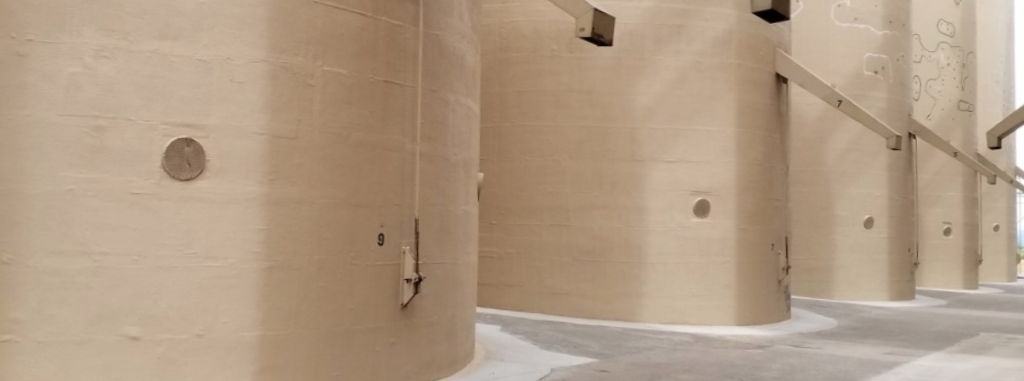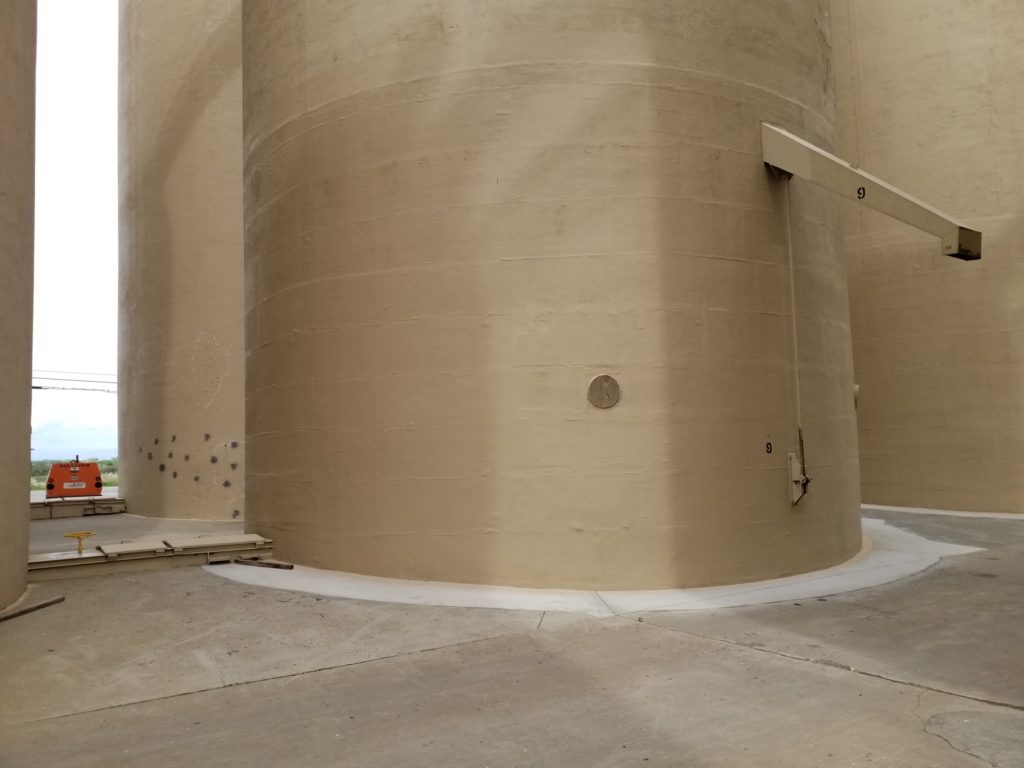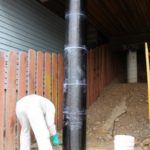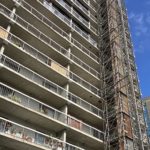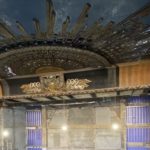The Simpson Strong-Tie® Composite Strengthening Systems™ was used to restore and strengthen 6 distressed cast-in-place concrete grain silos with a combination of carbon and glass FRP, meeting a tight timeline and budget.
Project Information
Project Category: Silo Repair and Strengthening
Project Size: 6 silos x 30ʹ in diameter, up to 21.5′ from the foundation
Project Owner: Shintaffer Farms, Marysville, CA
Engineer: SAGE Engineers, Roseville, CA
Structural restoration contractor and FRP Installer: Alternative Structural Technologies, (AST) Shingle Springs CA
Simpson Strong-Tie Products: CSS-ES epoxy saturant; CSS-EP epoxy paste; CSS-CA carbon anchor; CSS-CUCF unidirectional carbon fabric; CSS-CUGF unidirectional glass fabric
Project Start Date: March 2018
The Challenge
Critical to any project and owner is timing: How long is this going to take? How long is my equipment going to be inoperable? Or in the case of the Shintaffer silos: How long are the silos going to be out of service?
The Shintaffer Farms facility in Marysville, California, has 28 cast-in-place concrete silos constructed between 1981 and 1985. The silos are approximately 80ʹ tall and have a diameter of 30ʹ.
Six of the silos were shut down in March 2018 due to extensive concrete distress in the form of cracking, delaminated concrete, spalling and rebar corrosion.
First, laboratory analysis of the existing concrete was performed. This work confirmed that the major cause of reinforcing-steel corrosion seen in the structure was the inclusion of calcium chloride (set accelerator admixture) in the original mix during construction. Delamination was fairly extensive over the entire circumference of the silo structures. The average compressive strength of concrete was found to be 2,140 psi, less than the typically required 2,500 psi strength. The existing concrete walls were 6.5″ thick with #4 vertical reinforcement bars at 18″ o.c. and #5 horizontal rebar at 5″ o.c. (within the bottom forty feet).
By the time SAGE Engineers in Roseville, California, contacted Simpson Strong-Tie about the degraded silos, the owner of the silos was already concerned about harvest storage capacity for theupcoming season. Concrete repair and strengthening were mandatory and needed to completed prior to the September harvest. This left a very restrictive repair window of 180 days to complete all 6 units.


William Millhone with SAGE Engineers was the Engineer of Record responsible for this retrofit. SAGE Engineers, Simpson Strong-Tie CSS Engineers and Alternative Structural Technologies met in March 2018 to discuss various repair options. Since the rice silos were required to be operational in September 2018, the available window of time for retrofit was extremely narrow. In addition, the budget for the repairs was tight. The design team was expected to determine the most economical retrofit options that could be completed within the limited time frame.
The Solution
After considering several options, the design team narrowed down the following retrofit solution:
- All cracks and reparable areas of delamination would be structurally bonded using epoxy injection process on the six affected silos.
- All loose delaminated concrete would be chipped off and exposed rebar cleaned.
- Anodes were placed along the corroded rebar matrix to provide passive cathodic protection
- Concrete repair material would be spray-applied at all the delaminated areas.
- The engineering analysis required Simpson Strong-Tie fiber-reinforced polymer (FRP) to provide the equivalent of #4 vertical bars at 9″c., including tying-in to the foundation with Simpson FRP anchors, and #5 horizontal bars (hoops) at 5″o.c..
- Vertical FRP was to extend for 21.5 vertical feet of the silo. The horizontal FRP would extend for 14ʹvertically in strips from the base of the structure since the concrete strength was less than 2,500 psi and provided insufficient bond strength during the adhesion test.
- After installation of FRP, the structure needed to be painted.
This project required extensive coordination between SAGE, Simpson Strong-Tie and AST, the installer. To stay within schedule, the repair had already started when the drawings were still in progress, so regular site meetings and conference calls were required to ensure that all involved parties were on the right track. Simpson Strong-Tie engineers or RPS specialists were on the jobsite at least two to three times a month to answer questions and observe that the FRP installation was per plan.
The FRP system was designed by Simpson Strong-Tie per structural requirements provided by SAGE Engineers. FRP shop drawings and calculations were signed and sealed by Simpson Strong-Tie engineers. The final FRP design consisted of the following elements:
- One layer of Simpson Strong-Tie® CSS-CUCF4424, 24″c. (full coverage) oriented horizontally over the entire circumference of each silo for the bottom 14ʹ.
- One layer of Simpson Strong-Tie CSS-CUCF2224, 24″wide strips at 37″c. oriented vertically for 21.5ʹfrom the foundation.
- All vertical FRP strips were anchored in the foundation with Simpson Strong-Tie CSS-CA FRP anchors.
- For confinement above 14ʹ, Simpson Strong-Tie CSS-CUGF fabric was used.
- Special FRP detailing was provided at all openings per design requirements provided by the EOR using strips of Simpson Strong-Tie CSS-CUCF11.
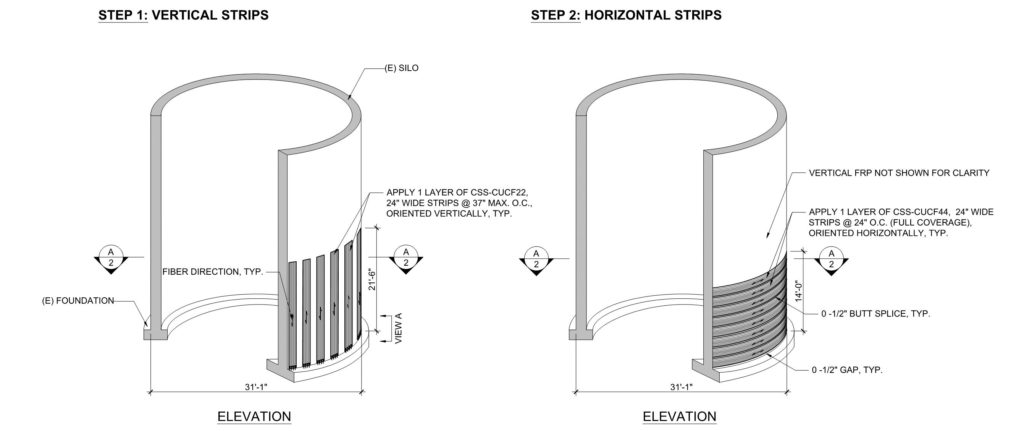
First, crack injection was installed using pressure injection, and repair mortar was sprayed on delaminated areas.CSS-EP epoxy pastewas then applied in several areas to smooth the concrete surface to the appropriate ICRI CSP prior to the FRP installation. After initial concrete preparation was completed, the FRP installation began. Simpson Strong-Tie® Composite Strengthening Systems™ were chosen for the repair due to their excellent engineering and field support.
The Results
After much coordination, construction was completed in August 2018, with silos fully functional and ready for rice storage in September 2018.
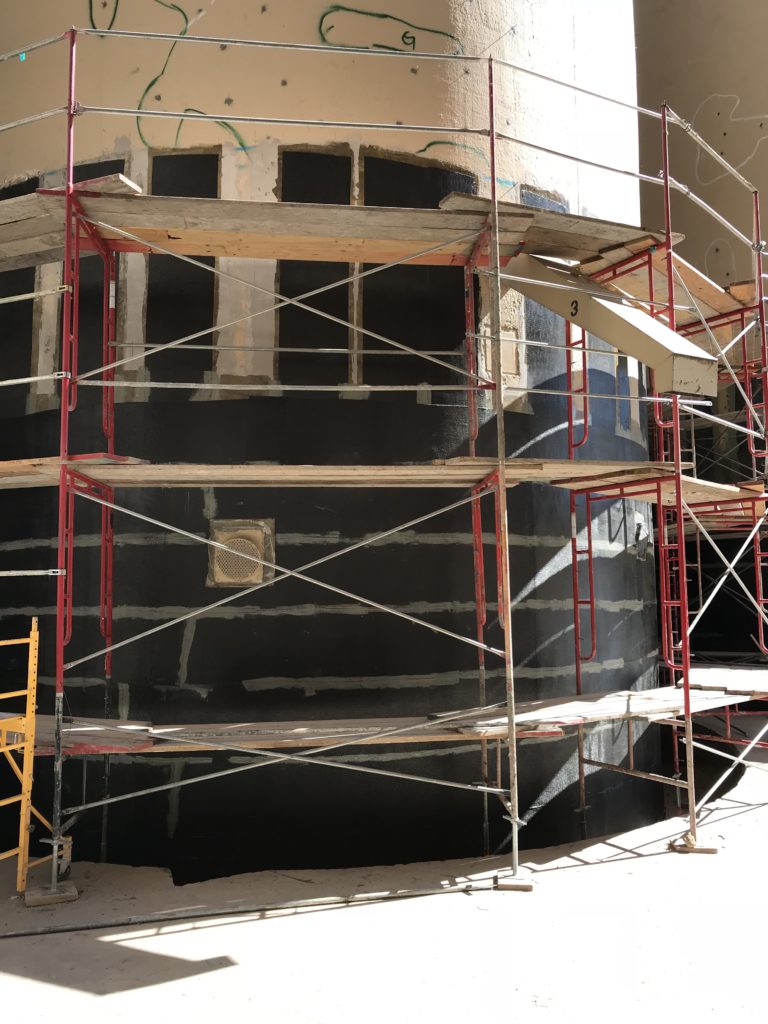
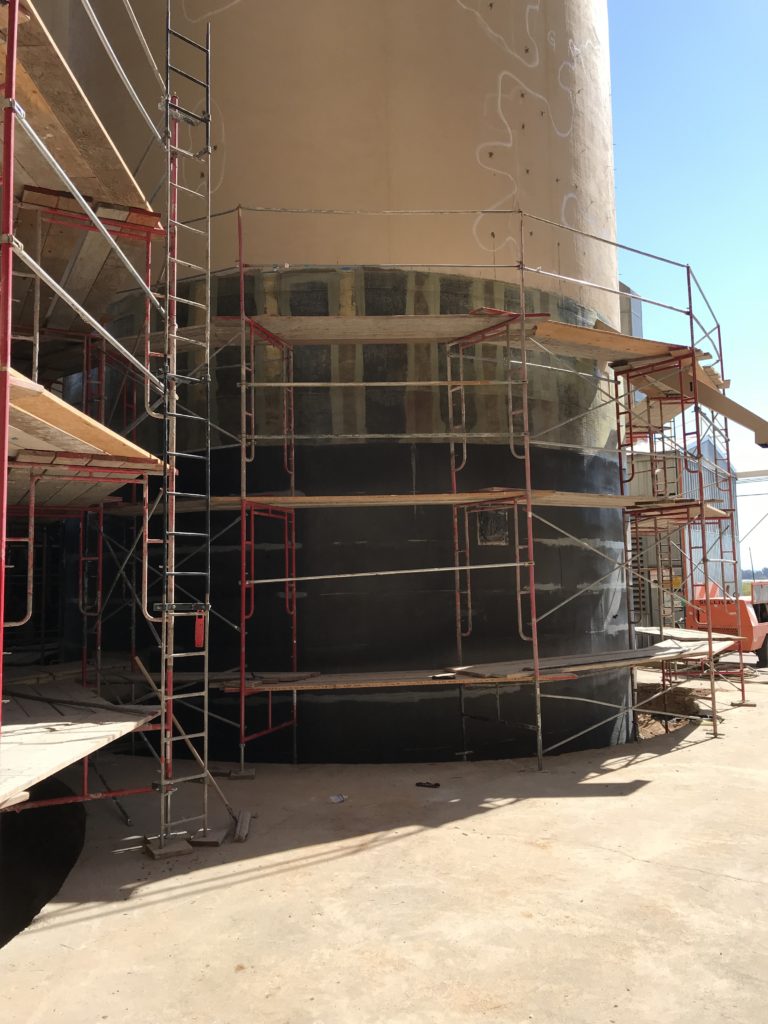
“Thank you to the engineering execution team for an extraordinary effort on all fronts. And to none more than the Simpson CSS Field Engineer for the continued immediate engineering support through a demanding value-engineering process. The efforts of all are sincerely appreciated. Best regards, Glenn Evans of AST. “
The owner at Shintaffer Farms was extremely happy with the timely repair, completed as promised, before the deadline. He wasso satisfied that he’s voiced a desire that the same team be assembled to perform repair for all their remaining 22 silos over the next few years in between periods of rice storage.

Simpson Strong-Tie Can Help
We recognize that specifying Simpson Strong-Tie® Composite Strengthening Systems™ (CSS) is unlike choosing any other product we offer. Leverage our expertise to help with your FRP strengthening designs. Our experienced technical representatives and licensed professional engineers provide complimentary design services and support – serving as your partner throughout the entire project cycle.
For complete information regarding specific products suitable to your unique situation or condition, please visit strongtie.com/css or call your local Simpson Strong-Tie RPS Specialist at (800) 999-5099.

